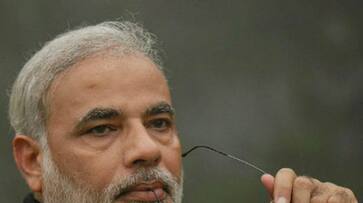The BJP indulged in major asset creation in rural India – from building roads, houses, public toilets, providing access to electricity, broadband connection and LPG. However, this major push for the development of rural India did not work in favour of the Modi government, at least in the Assembly polls of Chhattisgarh, Madhya Pradesh and Rajasthan
New Delhi: With the conclusion of the Assembly polls, the BJP lost ground to the Congress in the Hindi heartland. This loss shows that the BJP’s rural economy push simply wasn’t enough.
The BJP indulged in major asset creation in rural India – from building roads, houses, public toilets, providing access to electricity, broadband connection and LPG. However, this major push for the development of rural India did not work in favour of the Modi government, at least in the Assembly polls of Chhattisgarh, Madhya Pradesh and Rajasthan.
The Modi government’s implementation of rural assets and provision of amenities have been quite commendable
- The total number of houses constructed in rural India since 2015-16 under schemes such as the Pradhan Mantri Awaas Yojana-Gramin, is 3.3 times that during the preceding four financial years.
- Rural road construction has also seen a lot of progress in recent years, so much so, that only about 11% of the roads in Madhya Pradesh are not ‘pucca’. In April of 2010, the figure was over 60%.
- The number of active domestic LPG connections have gone up almost 10 crore in 2018 than that in 2015 under the Pradhan Mantri Ujjawala Yojana.
- Of the country’s 21.69 crore rural households, 96.24% are now electrified.
- More than 8.98 crore household toilets have been built in rural India since October 2, 2014, under the Swachh Bharat Mission-Gramin.
- 19.75 crore banks in rural areas have been opened under the Pradhan Mantri Jan-Dhan Yojana.
- While the assets were created, it did not increase the income of the rural workforce. This is due to stagnating wages and low crop prices. For rural voters, income is the most important factor and hence it explains the BJP’s losing ground in the three states it ruled.
Here’s why the asset creation did not reap the desired political impact
- Low crop prices: In 2014-15, the average annual increase in the wholesale price index has been only 2.75% for “food articles” and 0.76% for “non-food” agricultural articles; as opposed to 12.26% and 11.04% during the UPA rule.
- Farmers also experienced a decline in trade.
- Despite the government’s best efforts, there has been a considerable decline in rural wage growth for agricultural and non-agricultural operations after 2014-15. The average yearly increase amounted to 5.2%, which is neck with neck to the corresponding rise of 4.9% in the rural consumer price index.
- The stagnation in real rural wages is due to the low price of crops, which in turn reduced the demand for rural labour.
- In the post-demonetisation era, crop prices have experienced a continuous downfall trend.
Due to the low income of rural India, assets such as electricity and LPG connections are futile, because it becomes difficult to afford such amenities.
This only proves that while ambitious asset creation and welfare schemes in rural India might look praiseworthy, it does not ensure votes.
Last Updated Dec 12, 2018, 4:31 PM IST









![Salman Khan sets stage on fire for Anant Ambani, Radhika Merchant pre-wedding festivities [WATCH] ATG](https://static-gi.asianetnews.com/images/01hr1hh8y86gvb4kbqgnyhc0w0/whatsapp-image-2024-03-03-at-12-24-37-pm_100x60xt.jpg)
![Pregnant Deepika Padukone dances with Ranveer Singh at Anant Ambani, Radhika Merchant pre-wedding bash [WATCH] ATG](https://static-gi.asianetnews.com/images/01hr1ffyd3nzqzgm6ba0k87vr8/whatsapp-image-2024-03-03-at-11-45-35-am_100x60xt.jpg)


